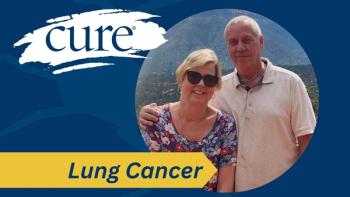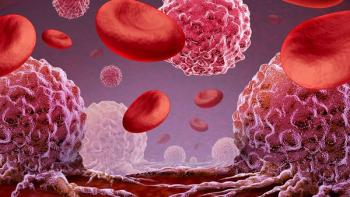
Patients Find Massage Eases Aches and Stress
Massage after breast cancer treatment can help ease many side effects.
Before being diagnosed with breast cancer at age 49 in 2007, Bo Palmer had never even considered the idea of getting a massage. A self-proclaimed type A personality who "would walk over you to get where I was going," the Arlington, Va., woman had a complete change of heart after developing lymphedema following a lumpectomy, chemotherapy and radiation treatments.
“I was in the school of ‘don’t touch me,’” says Palmer. “I thought that people who get massages clearly do yoga and eat granola. But to have someone touch you, it’s just like energy. Someone is taking the time to care for me and isn’t hurting me. It makes me feel great.”
Palmer found that her lymphedema stays under control with weekly massages that include manual lymphatic drainage, a specialized massage requiring extensive training that gently moves fluids from swollen areas. She was also delighted that regular massage of her lumpectomy scar flattened it and made it less noticeable.
“I think sometimes the scientific and medical community doesn’t give it enough value,” Palmer says. “That’s changing, but I think it needs to be more a standard of care.”
Palmer’s experience seems to epitomize the evolution of massage therapy for patients and survivors, which scientific research now suggests may help improve mood and reduce symptoms. But many patients still aren’t aware it’s an option to improve their comfort or are ready to consider it, says Jane Greene, RN, a licensed massage therapist at Memorial Sloan-Kettering Cancer Center in New York City.
“When they’re diagnosed, the word ‘cancer’ and their whole treatment plan overwhelm their consciousness, and often integrative therapies like this are in the background,” Greene explains. “Over the past 10 years, more research is coming out to support what we do. Massage was always very popular, but now it’s much more trusted by cancer patients.”
Scientists have scrutinized the general effects of massage for decades, but a raft of newer studies has zeroed in on its far-reaching advantages for cancer patients. Research has shown that massage can lower pain, nausea and fatigue, as well as emotional and physical discomfort. And a 2010 study in the journal Supportive Care in Cancer found massage therapy reduced depression and anxious depression among a small number of breast cancer patients who received two massages per week for five weeks.
Nanette Schoeder, a two-time breast cancer survivor, appreciated how regular massage therapy cut her nausea and fatigue during multiple rounds of chemotherapy. She had already made massage part of her wellness routine before she was diagnosed six years ago at age 48.
“It just made it easier for me to get up and do something,” says Schoeder, who also underwent a mastectomy and radiation.
But cancer brings special considerations to massage treatment, and it’s important that massage therapists working with patients be specially trained in cancer care, says Lauren Muser Cates, a licensed massage therapist and president of the Society for Oncology Massage, a five-year-old volunteer organization.
Vigorous massage can lead to bruising among those suffering from chemotherapy-induced low blood counts, for example, while areas undergoing radiation may be too sensitive to touch or may feel more burned if massage oil is applied.
But more problematic is the fact that lymph node removal, even if minimal, requires a customized evaluation of the benefits and risks of massage so as not to trigger lymphedema instead of reduce it.
All of these factors dictate whether a massage will be “light” (concentrating on the skin) or “deep” (focusing on underlying muscle tissue), and good therapists will ask detailed questions about each client’s treatment and well-being before each session.
“You can have someone sailing through treatment, such as a lumpectomy with no nodes taken out, and their massage can look ‘normal,’” says Cates, who is based in Arlington, Va. “For someone who’s had radiation or their nodes removed, we’re going to work much differently. It’s a very client-centered massage. If the therapist doesn’t have training and someone shows up on the table, they think they can just work lightly, but that’s patently untrue.”
The customized approach extends to metastatic cancer patients, whose metastases in bones, especially, require a lighter tough to avoid fractures. But there’s no reason these patients can’t benefit from massage, therapists say, though it would be unwise to directly massage an active tumor site (such as one palpable under the skin) because of the risk of causing irritation. While some have expressed concern about the possibility of massage causing spread of cancer cells, this has never been shown to be the case, and most experts do not feel this is a danger. However, many still feel it is prudent to avoid massage directly over a known area of tumor.
Despite its documented advantages to patients, most health insurance plans only offer limited coverage of massage therapy, if at all, therapists say, noting that a one-hour session can cost $80 to $120 or more depending on the region. But there are inconsistencies: Although manual lymphatic drainage is often covered when administered by a physical therapist, treatment by a massage therapist typically leaves patients paying out of pocket.
Kim Turk, lead massage therapist at Duke Integrative Medicine in Durham, N.C., said she encourages patients to submit massage bills to their insurance companies in hopes of building a case that this effective therapy comes relatively inexpensive.
“We’re managing pain, anxiety, all these things at a lower cost,” Turk says. “Clients get some personal attention to their bodies that doesn’t have to do with a treatment they’re scared of or that makes them nervous. It’s a whole hour just to comfort them, not to put in an IV, get chemo or get a mammogram.”





